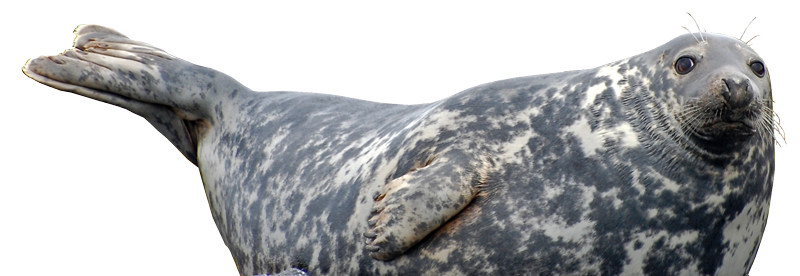| Description: A shark was observed stalking then rushing towards a wading boy, Harry Menzies, who ran for safety after being warned by a bystander. The shark beached itself in the process and was then killed by the boy’s saviour who later exhibited the shark inside a makeshift tent for a 10¢ entrance fee. The shark was described as a genuine man-eating Hawaiian variety.
From the Vancouver Daily World (July 6, 1925):
The strangest and most vicious animal that ever came out of the sea in the waters adjacent to the British Columbia coast was killed at the mouth of False Creek by Harry Dusenberry at 8 o’clock last night. The circumstances connected therewith savor of the Kingsley stories of life in the southern seas. Little Harry Menzies, the 8-year-old son of Ed. Menzies, foreman at the Hastings mill, was wading in the water among the shingle bolts just below Cotton’s mill, near the mouth of False Creek at high tide. Another little companion was playing with him at the time, but was on shore throwing stones into the creek and paying little attention to what was going on. Ed Dusenberry, who lives nearby and has several small boats for excursion purposes on shore, was standing idly looking on at the boy’s playing. His attention was suddenly attracted to a wave approaching the small boy, as though some other boy were swimming under water to grab the wader by the leg. Taking more careful observation as it approached—slow at first and then faster and faster—he saw a dorsal fin sticking above the muddy waters of False Creek and immediately concluded that the boy was in danger of losing his life. With a yell to the boy to come ashore, he grabbed a pike pole and made for the beach. The boy ran: the shark followed, and in three seconds was hard and fast aground. Mr. Dusenberry lost no time. He grabbed the shark in the flank with the hook of the pike pole and tried to pull it ashore. Enraged by the pain, the shark opened its mouth and showed the most formidable set of dentistry he had ever seen—something like a man would expect in a horrible nightmare. Without hesitation, Mr. Dusenberry jammed the pike pole down the animal’s throat and into its entrails. Afterward, when measurements were taken, it was found that the pike pole had gone eight feet down the shark’s throat. When a shark is held head on to the land, it is powerless to release itself—the more it thrashes the water, the faster it goes ashore. Mr. Dusenberry knew this and he was content for a moment or two to hand on to the pike pole and wrestle with the vicious monster as best he could. The boys in the meantime had given the alarm and help arrived. Three or four other men grabbed the pike pole and undertook to pull the shark ashore but they only succeeded in disembowelling it. Its struggles were weakened instantly but it continued to thrash and quiver for an hour and a half after it had come ashore. Eyewitnesses say that it must have bled nearly a barrel of gore. When its struggles finally ceased, a line was attached to its tail and the monster made fast to a timber. This morning they undertook fetching it ashore, but it was quickly found that it was no easy job. Finally, by a line around its body, 20 men managed to to get it up onto the grass a few feet above high tide. Mr. Dusenberry, who is a man for an emergency, immediately recognised the Barnham possibilities and improvised a tent out of old sails which he cast over the shark and on the door of which he put “10 cents to see the big shark.” During the day many hundred people have visited the tent to gaze on the monster and the man has not come forward yet who has been able to testify to having seen a bigger shark. Captain Anderson, who was present when The World man arrived, and who has had opportunities of seeing animals in many seas, says that it is undoubtedly the genuine man-eating Hawaiian variety. In its native waters, which are 3400 miles from where it was caught, it would be known as a mud shark, a species of white shark but larger and more vicious. Such animals are not native to these waters and probably another such was never seen on the Pacific coast of North America; certainly not on the B.C. coast. In order to get here, it must have followed the salmon or some vessel all the way from the south seas.
Assessment: Based on the shark’s reported size, behaviour and location, it is our3 determination that it was a bluntnose sixgill shark (Hexanchus griseus). The reported dorsal fin while swimming at the surface may have instead been the shark’s caudal fin (tail) of the shark. The poor-quality image accompanying the follow-up story on July 7 shows a shark with a rostrum resembling a bluntnose sixgill or Pacific sleeper shark (Somniosus pacificus)—whose near-identical cousin, the Greenland shark (Somniosus microcephalus), is well-known for stalking prey in the manner described in the story, both in the Arctic Ocean and in the St. Lawrence—but the position of the dorsal fin as well as the mouth gape are more akin to the bluntnose sixgill. The size of the dorsal fin eliminates the basking shark.
 Click here for swimmer recommendations. Click here for swimmer recommendations.
|









